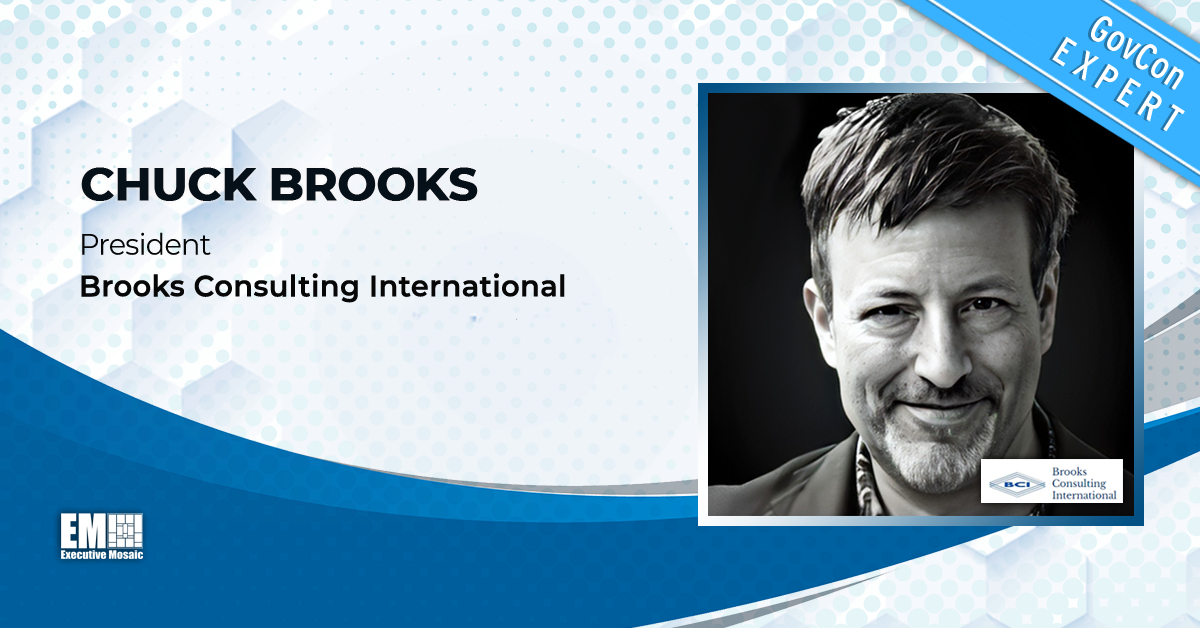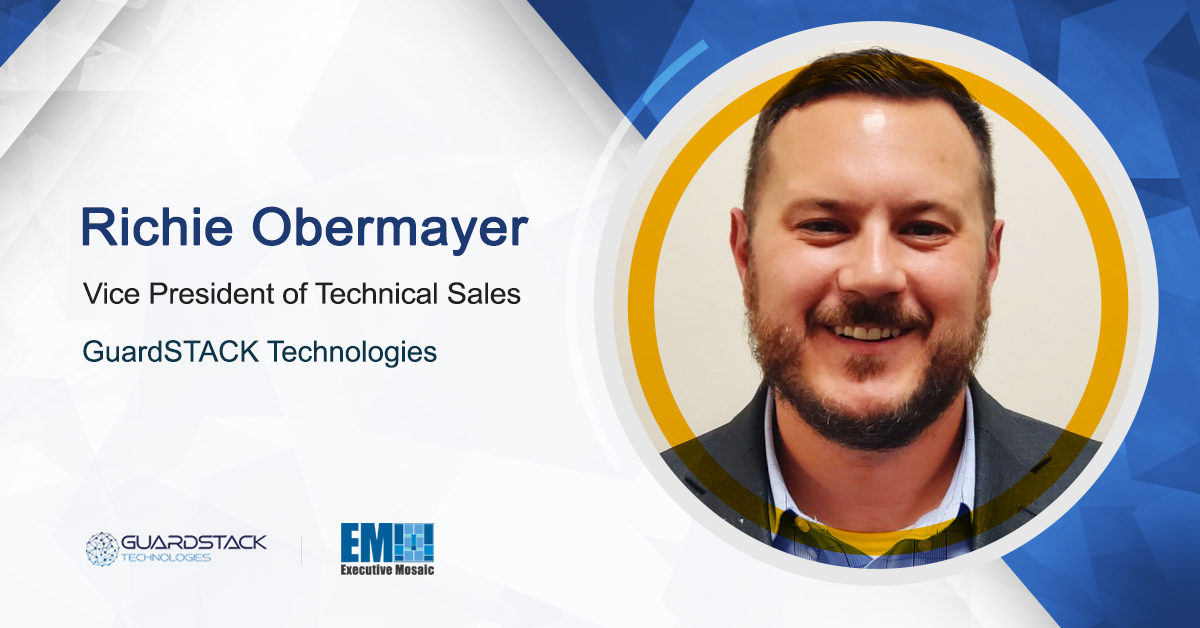The fifth-generation wireless technology holds great promise for the federal government. It is expected to be a key enabler in making smart cities, tactical edge connectivity, and the ever-expanding internet of things a reality.
Jill Singer, vice president of national security for AT&T Public Sector, dove into what the future holds for 5G and the most pressing national security threats facing the United States today in an exclusive interview with Executive Mosaic.
The six-time Wash100 Award winner and GovCon Expert also leveraged her three decades of experience across the public and private sectors to impart invaluable advice to those looking to advance their careers in the GovCon landscape.
Read below for Jill Singer’s full Executive Spotlight interview.
As technology develops, what do you think is on the horizon for 5G?
I think we’re going to see agencies develop and acquire a variety of new and innovative use cases powered by 5G — things that we haven’t even thought of yet — that help them meet their mission needs while integrating and exploiting the features of 5G, like scalability, flexibility, speeds and lower latency.
5G on its own is very powerful, but it’s even more powerful when combined with network edge compute, which would be for a metro area, plus multi-access edge compute, which is more premise-based access. For 5G, the horizon is now, as it can enable vast compute capabilities closer to connected devices and systems to empower new experiences.
I have three examples that relate to government and non-government. First is using 5G and edge compute to manage your warehouse operations, schedule your incoming and your outgoing materials, your disposal of assets and your supply chain tracking of assets in real-time. You can combine personnel with robotic warehouse resources to improve the efficiency and security of your operations, but you’re also going to be able to deliver a better experience to your customers.
A second example is a connected field experience. This would be using the concepts of smart cities powered by 5G for campuses and bases to manage traffic better. That includes vehicular traffic and, if necessary, pedestrian traffic. It also allows for better energy management and consumption all across that field and can support waste disposal, personnel security and safety. A 5G-connected field experience can help with operational performance while reducing risk and promoting security.
A third example is connected exercises and training. When you combine 5G with edge compute and augmented reality, you can more efficiently train and exercise your teams through various scenarios, including a public safety response or military preparedness, border patrol and more.
What role does 5G play in connecting Internet of Things devices and providing connectivity at the tactical edge? How do you think those capabilities can be improved?
With 5G, IoT gets faster speeds and throughput and reduces latency to either upload or download information to an IoT device. 5G supports a greater density of things, and we know we’re looking at IoT devices into the billions. 5G is expected to enable massive IoT deployments connected with ultra-low latency.
One example we think of a lot is the connected car and the multiple sensors that manage your vehicle’s safety and health data. But when we get into driverless mode, we expect millions of IoT sensors will try to ensure all cars are in the proper safety and health modes.
Combining IoT with multi-access edge compute capabilities that I spoke about earlier bridges edge operations for many of our IoT use cases. For example, depending on the sensor and the application, you could do real-time analytics at the tactical edge. You don’t have to get data from that sensor, send it back somewhere, do analysis away from the device and then send the next action to the device.
While the latency may seem short, nanoseconds and milliseconds count here. When 5G is combined with multi-access edge compute, functionality and capabilities are closer and more readily available to the IoT device. 5G makes IoT more cost-efficient and more operationally efficient. It also adds additional performance benefits and the ability to deliver compute autonomy at the network edge.
What’s the most impactful trend you’re currently seeing in the GovCon market? How are you seeing GovCon organizations respond to that trend?
What I see as a trend in the GovCon market are agencies and the military leveraging the speed of commercial innovation. We see the government trying to lean forward into 5G, artificial intelligence and augmented and virtual reality as agencies explore commercial innovations to understand how these innovations improve mission delivery and the IT foundation.
We see an increasing appetite and desire to leverage the speed of commercial innovation, which leads me to a trend I call ‘adaptive contracting.’ We still have the traditional acquisition lifecycle that takes quite a while for the government to get its requirements right, to get a request for proposal out, for the industry to respond to that proposal, for it to go through the evaluation process and come out the other end. And there is a need for that.
But what we’re seeing along with commercial innovation is faster contracting approaches that aren’t necessarily locking the government in for years at a time. These contracting approaches pave the way for the government to test these new technologies quickly and agilely to know and understand which of these technologies they should use and how they should use them.
One last trend we see in government is increased recognition that all networking is not done on a desktop; the office environment is not just the traditional sit in your cubicle, sit in your office, log onto your desktop. In today’s world, it’s the convergence of wireline or traditional networking with wireless networks and using both to deliver the mission response where the mission response is needed. We’re seeing that convergence and that shift, much as you’ve seen in the commercial sector. Part of it is the recognition that all workers cannot be tethered to a desktop.
What do you think are the most pressing national security threats we’re facing today, and how can we address them?
I will start with what I think is evident to everybody, but it’s cyber, cyber, cyber and more cyber. There are ever-present cybersecurity threats, and they evolve way too quickly. There’s a saying that the bad guys must get it right once or now and then, and the good guys have to get it right every time. So how do we address this as a government, and how do we address this as a nation?
Part of how we address it is by ensuring every element within the IT architecture or system has built-in cybersecurity protections. It’s examining the supply chain and ensuring the software or the hardware you’re procuring and inserting into your infrastructure is safe, it was manufactured as you expected and it wasn’t tampered with during the shipping process.
It also means organizations are doing their job to prioritize excellent cyber hygiene. If your software needs to be patched, you need to patch it, and not six months from now: you need to patch it quickly. If your hardware is old and end of life or end of support, it’s probably not going to get another cyber patch, so you must make sure you are proactive in getting old gear out and new gear in.
We address it by working as a whole of government, where the elements that understand defense are talking to each other to share best practices. They’re quickly sharing threat information and solutions to those threats across the relevant ecosystem. Everyone means all of us — large, medium and small companies in the defense industrial base. It also means willingness to work together as we do business with the government.
The next significant threat is authenticity — quantifying and qualifying what is real and what is not. This applies beyond the common social media platforms, news networks, et cetera. It is a pressing and growing national security threat.
I don’t have a great solution for that yet. Right now, I would stand on the platform of awareness and the adage of ‘trust but verify.’ Just because it is available online does not mean it’s true. In that awareness comes education: the education to question with a healthy dose of skepticism and not react until you are confident that something is factual.
The third national security threat takes me back to a prior answer. It is the pace of technology adoption. New technologies should be approached with a proper level of suspicion so that you are testing them and trying them in a safe space and in a safe way.
Legacy environments take time to shift. You want to ensure you’re not throwing in new technology just because it seems cool unless you’ve conducted the due diligence on that technology in advance. You want to maintain the legacy environment your entire government mission or business relies upon. It takes time to get a new technology fully delivered across an enterprise.
Regarding technology adoption, the policies and the laws also take time to adjust and change. There’s much talk about artificial intelligence right now. We need to be patient in giving policymakers and lawmakers the time to understand the correct position, so they don’t just adopt a position we’ll have to change tomorrow. AI is a promising technology, and we must approach it smartly.
What advice would you give to those who are pursuing executive-level positions in GovCon and looking to accelerate their professional growth?
This is a space where if technology is exciting to you, if the mission is exciting to you, you can combine your vocation with your advocation. I would tell someone looking to pursue a higher-level position to keep sight of that. We get the ability to do what we love for what we love. Keep that with you as you go forward.
In the short term, be innovative, proven and patient. Careers are long — this was advice I was given long ago. Your career will be 35 or 40 years, so be willing to be patient, and while you’re in a job, demonstrate that you’re intelligent and capable of doing that job. Take the time to make an impact in that job before you look for the next position.
Whether you’re in technology or something else, always keep learning. There is constantly something new out there that we should all know and understand, whether it is about culture, whether it is about technology, whether it is about business.
Then finally, put some sweat equity into your online professional networking. You might have 50 connections or 5,050 connections. But your network can only be strong if you take the time to build relationships with those people beyond accepting invitations to connect. So, take the time to find people you admire and people who are maybe in your industry or an adjacent industry that interests you, and build a relationship with them.






